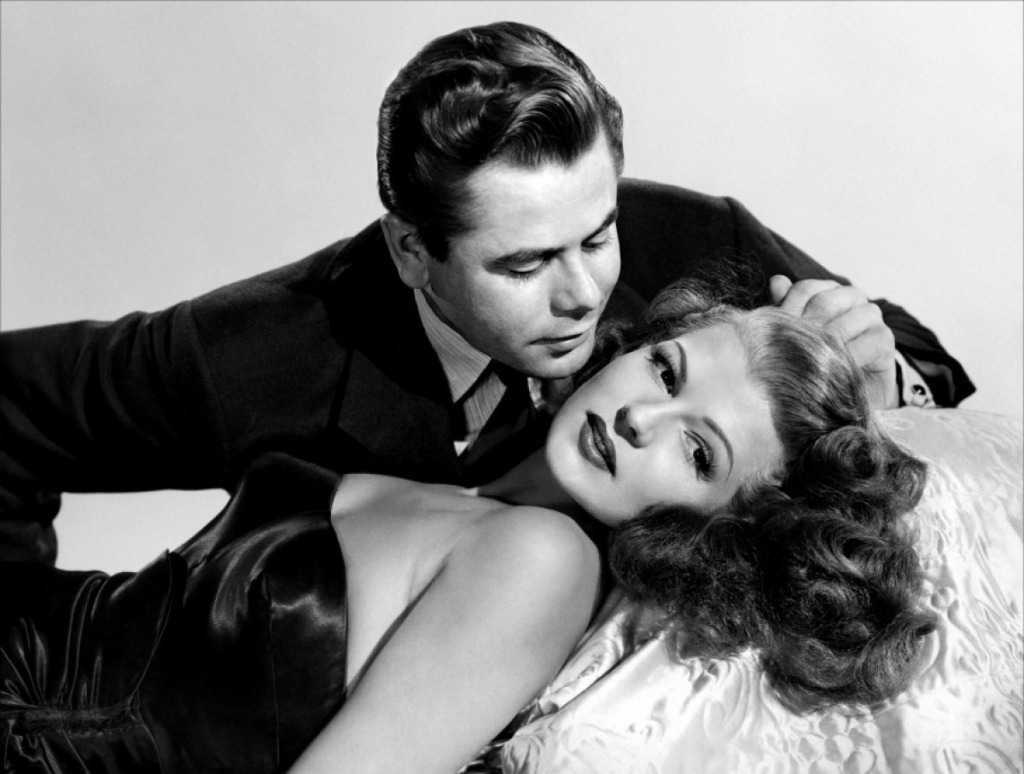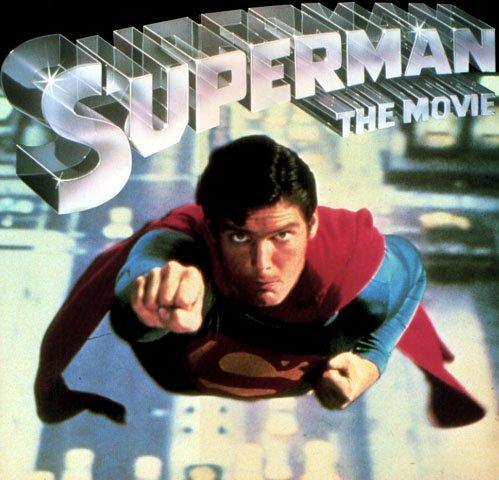Rita Hayworth was a big singing and dancing star of musicals in the early 1940s, but the film that made her an international sex bomb (literally) wasn’t released until 1946: Gilda.
The plot, which echoes Casablanca in a number of respects, concerns a love triangle in a faraway land, in this case, Argentina. Johnny Farrell (Glenn Ford) is a cocky grifter who is on his uppers. He is saved from a mugging by a mysterious and rather menacing casino owner named Ballin Mundson (George Macready) whom he subsequently manages to talk into hiring him as an aide-de-camp. All is well for a time, though Johnny suspects that the casino is only a front for Mundson’s other, more shady, business. But before you can say cherchez la femme, their relationship changes for the worse when Mundson marries a sizzling beauty named Gilda (Hayworth), with whom Johnny has an unhappy history. Thus commences a love-hate-love relationship in which Johnny and Gilda torment each other while Ballin begins to suspect the truth about their former relationship. Meanwhile, both the police and Ballin’s criminal associates are closing in on his other lucrative but illegal line of work.
This is a star vehicle for Hayworth from the famous moment she first appears on screen with a sensual toss of her hair. She gets to sing and dance as well as act, most legendarily in her striptease style number “Put the Blame on Mame”. Countless American men (and no doubt some women) were sexually enthralled with her forever after.
I know too much about Hayworth to have such an uncomplicated reaction. I feel sorry for Margarita Cansino, the pudgy Hispanic girl and incest victim whom Hollywood turned — at the cost to her of physical and emotional pain — into Rita Hayworth. She never got to be who she really was and virtually every man in her life, starting with her father, exploited her. It’s a credit to her strength that despite understandable, significant emotional troubles she managed to always pull things together on screen throughout the 1940s and be a terrific movie star. Gilda is generally considered her finest hour, and with good reason.
Even though it’s Hayworth’s film, two other aspects of it are extremely compelling. The first is Glenn Ford. He’s kinetic on screen, a man always appraising every angle in search of some advantage. He also manages, despite not having classically handsome Hollywood-type features, to convey enough sexual attractiveness that Hayworth’s desire for him is entirely believable.

The other thing I adore about this movie is Rudolph Maté’s camerawork, which is completely arresting beginning with the opening, rising shot of those big rolling dice. I have praised him before for his work on Vampyr, but the tools of cinematography came a long way technically since that early film. And boy, does Maté take advantage. Perfect use of light and shadow, deep focus shots, close-ups at critical moments, it’s all here in the hands of a master. And thank you again UCLA Preservation team for this crystal clear, gorgeous restoration of the print.
The performances and the cinematography help make up for an uneven script, which may simply have had too many cooks. There are some lines to die for, and some sharp dialogue, but the plot structure of the last third is unnecessarily clunky in some respects and too pat in others. Still, Gilda is a very fine film noir that completely holds up almost 70 years later.
p.s. The conventional take on Bosley Crowther’s career as a NYT film reviewer is that he lost touch with modern tastes in the late 1960s (His repeated trashing of Bonnie and Clyde being the death-knell) after a long and distinguished career. But if you read his obtuse, inept review of Gilda twenty years earlier, you will see that he never really knew what he was talking about.




